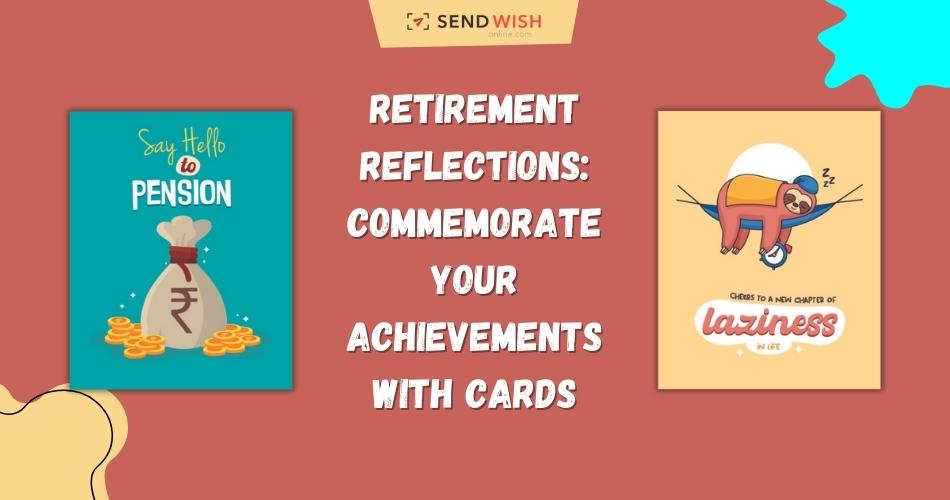Retirement cards are seen as a tradition across many societies, often as a way of saying ‘Thank You’ and wishing the best to any person wishing to retire from an active working life has been productive for many years. The wishes on such cards may include greetings for the retiree or may convey sentiments such as congratulations or sentiments for the retiree’s future. Analyzing the history an development of this unique gift provides a historical background of the general public view on work and free time, as well as important milestones in people’s lives.
Early Beginnings
The concept of retirement has been practiced in various forms, even in the early years but it’s only that the tradition of popularizing it with a card has not been universal. For refined retirement, the later half of the nineteenth and the early twentieth century was the critical period commonly accompanied by the establishment of the pension systems and retirement ages in the industrialized countries. To begin with, retirement was considered as a time for relaxation after a lifetime of work, encompassing many people, who at that time worked in manual labor jobs.
Emergence of Retirement Cards
The earliest examples of retirement cards emerged in the middle of the twentieth century, which is logical given the changes in the perception towards working and enjoying free time in the later part of one’s life. When retirement was instituted and obtaining the occasion started to become more standard and eventually encouraged, the manufacturers of greeting cards noticed this could be a good chance for them to develop an occasion-unique greeting card for retirees. Such early cards tend to depict age-old elements such as a clock, a briefcase or even representations of leisure time, a calm countryside.
Themes and Designs
Looking at this subject from a historical perspective, one can conclude that both the design of the retirement cards as well as their message reflect a change in away for the better. While foundational, they started as a basic and textual kind of product that then evolved into elaborated and individualistic forms that bore the personalities of matures or retirees.
The setting became less focused on clichéd images of sunning oneself, fishing, traveling, or engaging in humorous scenarios pertinent to the retiree’s occupation or future plans.
Cultural Variations
This is also echoed in the aspect of culture since retirement cards signify a way in which retirement is understood and appreciated. Coming to retirement is a serious event followed by many ritualistic and ceremonial activities in some cultures, while it can be a happy event accompanied by lots of laughter in other cultures. Retirement cards then embrace these cultural shifts, heralding signification motifs, tones, and words to appeal to the affected person.
Technological Advancements
Retirement cards have gone for a wide variety with the introduction of digital communication platforms owing to the display of different kinds of cards.
Now, it is already possible to congratulate or send another greeting through E-cards or digital messages that seem much more engaging than conventional cards. Nonetheless, it is vital to note that the use of printed cards, in particular, is still relevant because they have a real and genuine feel.
Personalization and Customization
Another feature that is characteristic of present-day retirement cards is discussed as the tendency of individualization. It is common for card makers to use company logos and special photos, messages that are not readily apparent to outsiders, or other nostalgic motivations to include a retiring employee. This customization brings an amazing value to the company’s card that goes beyond the simple appreciation of effort in work; it becomes a poignant reminder of working days that the retiree can cherish while opening the card years later.
Evolution of Messages
Not only the concepts encompassed in retirement greetings but also the messages written on the inside of those greeting cards have also undergone change at some point. Traditional messages on retirement may only wish for a comfortable retirement; new messages in cards may include thanks for their efforts, commendation for the great work, and much more still, possibly well wishes for whatever new endeavor the retirees may be taking up. In fact, some cards have funny stories or motivating quotes at the back to help bring cheer to the retiree on his/her new endeavor.
Impact of Retirement Cards
In addition to being a token of gratitude, retirement card are an essential practice that enhances organizational culture and interpersonal relations – especially in the workplace.
They give an opportunity to peers and buddies to make an avowal of their emotions and recollections, deepening professional relationships built during long-term teamwork. For the retiree, the receipt of these cards cannot but always be emotional, a testament to one’s career and, more impressively, the mark they have left.
Future Trends
Hence for the future, retirement card are expected to face further developments in their forms depending on demographic characteristics, work styles, and organizational practices, and cultural shift. In a similar vein, retirement is not a homogeneous event happening to mass and uniformed employees but an experience that is highly individualized and varied, so the farewell cards are equally flexible. From the point of view of the prospects of creating retirement cards, it can be stated that it can progress in three directions: innovative designs, ecological materials, augmented reality experience, and marvelous retirees themselves.
Conclusion
Therefore, the development of retirement cards proves a social histories and cultural transformation in regard to work expectations and other aspects of people’s lives. From small and simple messages on pieces of paper cards that read like novels nowadays having unique and personal inscriptions expressing gratitude and admiration, retirement cards are an essential part of the final coat. These cards become even more significant as they grow older, making sure that people remember the positive contributions they bring to their work as they progress through their careers and the endless opportunities of enjoyment that await them in their free time in retirement.
